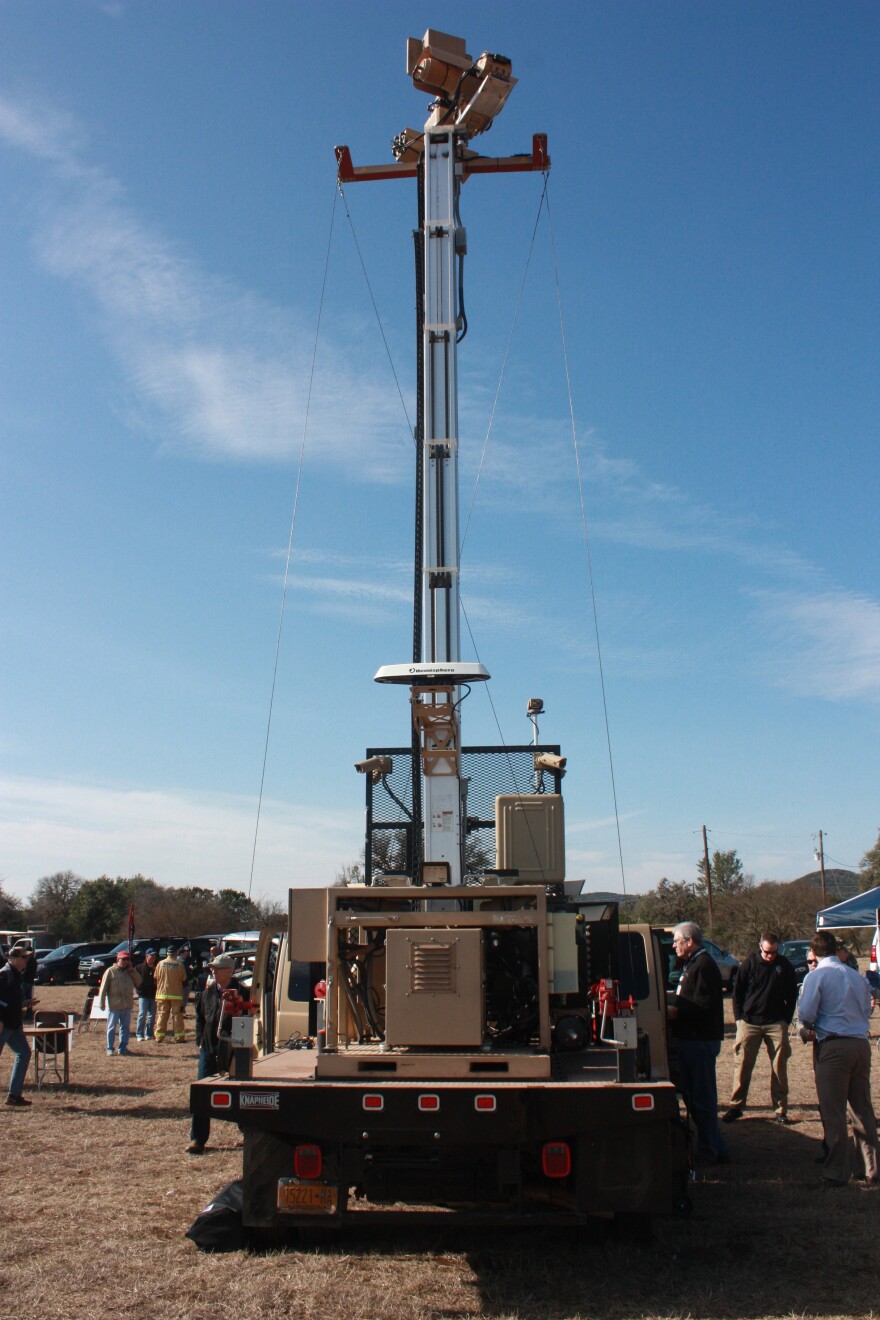It's a windy morning at the Bandera Gun Club and its sprawling grass fields dotted with shooting stations on the outskirts of the tiny Texas town.
Gunshots echo along the rolling hills as more than 20 groups of men prepare their booths of technological wares for the security minded. F-350s sit with massive mast-like poles sprouting from their beds. A temporary structure holds banks of computer monitors that stream video from the 80-foot trailer-mounted tower outside.
"Can an individual border agent on the ground get this image?" Congressman Will Hurd, R-Texas, asked.
Hurd is talking to vendors who hope to do more business with U.S. Border Patrol.

"We do have solutions to provide that. It is not instituted in the field right now," said Mike Wilson with Elbit Systems.
Hurd is interested in getting more technology into the hands of border agents. He said he is seeing much of the same technology he had before with many of the same limitations.
Infrastructure challenges, like a lack of cellular networks along the border, hinder many normal processes. This is part of the reason why Hurd pushed legislation for a so-called “smart” wall of networked sensors and cameras instead of President Trump’s physical border wall, which Hurd has been critical.
“Instead of building a 30-foot high concrete structure from sea to shining sea,” he said, “let’s lay a fiber optic cable along the entire length of the border.”
It would be cheaper, he said, and address the communications problems that plague the border patrol’s efforts. Until then, some tech solutions exist, but Hurd says government bureaucracy gets in the way of getting into the field.
"And we're oftentimes asking (border patrol agents) to pursue individuals that are better financed and have better tech then they do," Hurd said.
Complaints over red tape in developing, procuring and equipping officers was a theme at the recent Border Security Expo.
Former Border Patrol chief David Aguilar agreed with Hurd and said a perfect example was when border patrol got approval to start mounting integrated fixed surveillance towers in Arizona.
"I left Arizona in 2004. Those IFT towers are still being placed today," he said.
The former acting commissioner of the U.S. Department of Homeland Security Jayson Ahern said on a panel at last week’s expo that DHS had failed to keep up with other agencies in addressing the issue of innovation.
“I can’t give you an explanation why,” he said. “It certainly hasn’t advanced in the over eight years since I have been away.”
DHS started to take a page from the Department of Defense and other agencies by implementing programs that shorten tech deployment timelines, pilot technologies with business and increase collaboration with academia.
For many small- and mid-sized businesses, the process for developing, testing, and meeting federal acquisition standards is prohibitively high. The government has launched several programs to attempt to address the issue, but progress is slow.
“They felt that we they were outsourcing something they considered to be inherently governmental,” said Marsha Malone, a founder of the Border Security Technology Consortium, which formed in 2012 to connect U.S. Customs and Border Protection with small startups.
Malone works for Leidos, one of the largest federal contractors of IT in the country. She said it took five years, but they are finally having their first pitch session from companies later this month.
The Procurement Innovation Lab was launched in March of 2015 to lower barriers to government contracting. From 2016 to 2017, PIL saw a three fold increase in projects, from eight to 24.

In 2015, a survey from DHS showed that 74 percent of agency acquisition workers feared innovation. Two years later, more than half reported support for innovation.
“We can no longer wait years to implement five year-old technology,” said Jon McEntee, head of DHS’s Science Directorate, the agency's research and development arm. "And I know this is taxpayer money. We have to be very careful with it and doing the right thing and being equal and competitive."
Federal purchasing program rules don’t exist in a vacuum, though. Many in border security remember the 2006 Secure Border Initiative that sought to build a series of networked towers and cameras across the border. The project, led by Boeing, was plagued by technical problems. The Government Accountability Office said it lacked oversight in a report. The Obama Administration diverted funding in 2010.
Paul Flahive can be reached at paul@tpr.org or on Twitter @paulflahive



